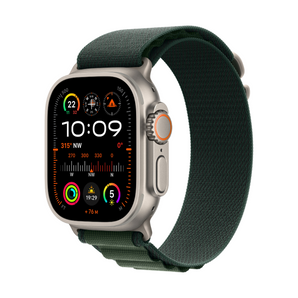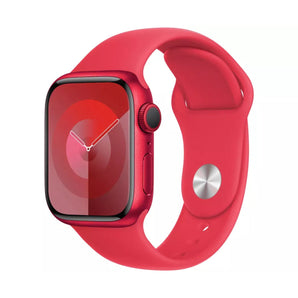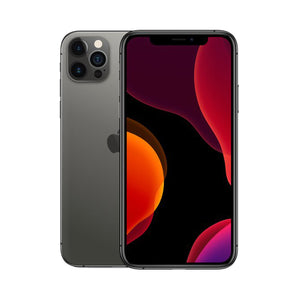As we step into 2025, the choice between the iPhone 12 and the iPhone 13 refurbished becomes a common consideration for many. With the prices of new smartphones soaring, refurbished options present a more budget-friendly alternative without compromising too much on performance or features. This article will help you weigh the differences between these two models, focusing on their performance, design, camera capabilities, pricing trends, warranty, sustainability, and user experiences. Let's dive into the details and see which refurbished iPhone might be the better buy for you.
Key Takeaways
-
The iPhone 13 offers better performance with its A15 chip compared to the A14 in the iPhone 12.
-
Battery life is generally improved in the iPhone 13, making it a better choice for heavy users.
-
Refurbished iPhones can save you a significant amount of money while still providing a great user experience.
-
Both models are supported by iOS updates, but the iPhone 13 will receive updates for longer due to its newer release.
-
Buying refurbished is an eco-friendly choice that helps reduce electronic waste.
Performance Comparison Between iPhone 12 And iPhone 13 Refurbished
When considering a refurbished iPhone 12 or 13 comparison, performance is a key factor. Both phones are still very capable in 2025, but there are some important differences to consider.
Processor Capabilities
The iPhone 13 has the A15 Bionic chip, while the iPhone 12 has the A14 Bionic. The A15 offers a noticeable performance boost, especially in graphics-intensive tasks like gaming and video editing. This means the iPhone 13 will generally feel faster and more responsive. For everyday tasks like browsing and social media, the difference might be less noticeable, but the A15 provides more headroom for future software updates and demanding apps. The refurbished iPhone 11 and refurbished iPhone 12 still deliver impressive performance.
Battery Life Analysis
Battery life is another area where the iPhone 13 has an advantage. Apple improved the battery efficiency with the A15 chip and slightly increased the battery capacity. This results in the iPhone 13 generally lasting a few hours longer than the iPhone 12 on a single charge. This can be a significant factor if you're a heavy user or often find yourself away from a charger. When looking at iPhone 13 refurbished vs iPhone 12 used, battery health is something to check, as it degrades over time.
Software Support and Updates
Both the iPhone 12 and iPhone 13 will continue to receive iOS updates for the foreseeable future. However, because the iPhone 13 is newer, it will likely receive updates for an extra year or two compared to the iPhone 12. This means you'll have access to the latest features, security patches, and improvements for longer. If long-term software support is important to you, the iPhone 13 is the better choice. Thinking about the best used iPhone 12 vs 13? Software support is a key consideration.
"Choosing between the iPhone 12 and 13 comes down to balancing cost and performance. The iPhone 12 is still a very capable phone, and a great option if you're on a tighter budget. However, the iPhone 13 offers a noticeable performance boost, better battery life, and longer software support, making it a worthwhile investment if you can afford the extra cost. Don't forget to check the warranty when buying iPhone 12 vs 13 second hand."
Build Quality and Materials
When considering a refurbished iPhone 12 or 13, the build quality is a key factor. Both models boast a premium design, but there are subtle differences. The iPhone 12 features an aerospace-grade aluminium frame, while the iPhone 13 maintains this but with slight refinements to improve durability. The iPhone 13 also introduced a diagonal camera layout which is a quick visual identifier.
-
Both phones use a glass back, making them prone to scratches and cracks if not handled carefully.
-
The iPhone 12 features a Ceramic Shield front cover, offering improved drop performance compared to previous models.
-
The iPhone 13 also uses Ceramic Shield, further enhancing its resistance to damage.
Display Differences
Both the iPhone 12 and iPhone 13 feature a 6.1-inch Super Retina XDR display, but the iPhone 13 has a notable advantage. The iPhone 13's display is significantly brighter, making it easier to view in direct sunlight. While both offer excellent colour accuracy and sharpness, the increased brightness of the iPhone 13 provides a more vibrant viewing experience.
Size and Weight Considerations
In terms of size and weight, the differences between the iPhone 12 and iPhone 13 are minimal. Both phones are comfortable to hold and use, but the iPhone 13 is slightly thicker and heavier due to its larger battery and other internal improvements. This difference is unlikely to be noticeable for most users, but it's worth considering if you prefer a lighter device.
The iPhone 13 is a tiny bit heavier than the iPhone 12, but it's not something you'd really notice day-to-day. It's more about whether you prefer the flat edges of both models or if you're after the slightly brighter screen on the 13. Honestly, it's a close call for most people.
Camera Capabilities Of iPhone 12 And iPhone 13 Refurbished
Camera Specifications
Let's get into the nitty-gritty of what these cameras can actually do. The iPhone 12 sports a dual 12MP camera system, featuring Wide and Ultra Wide lenses. It's a solid setup, capable of capturing detailed shots in good lighting. The iPhone 13, however, takes things up a notch. While it also has a dual 12MP system, the sensors are larger, allowing for better light capture and improved image quality, especially in low-light conditions. This difference in sensor size is a key factor when considering image quality.
Photography Features
Both phones come packed with features, but there are some notable differences. The iPhone 12 introduced Night mode to all its cameras, which was a big deal at the time. It also has Smart HDR 3 for photos. The iPhone 13 builds on this with Photographic Styles, allowing you to customise the look of your photos with presets that intelligently apply adjustments to different parts of the image. It also boasts Smart HDR 4, offering even better dynamic range and colour accuracy.


























